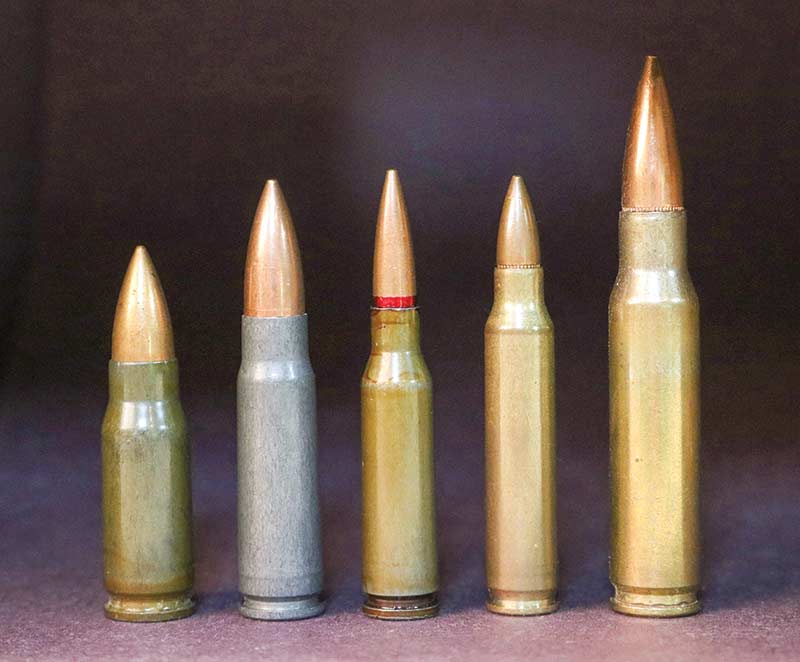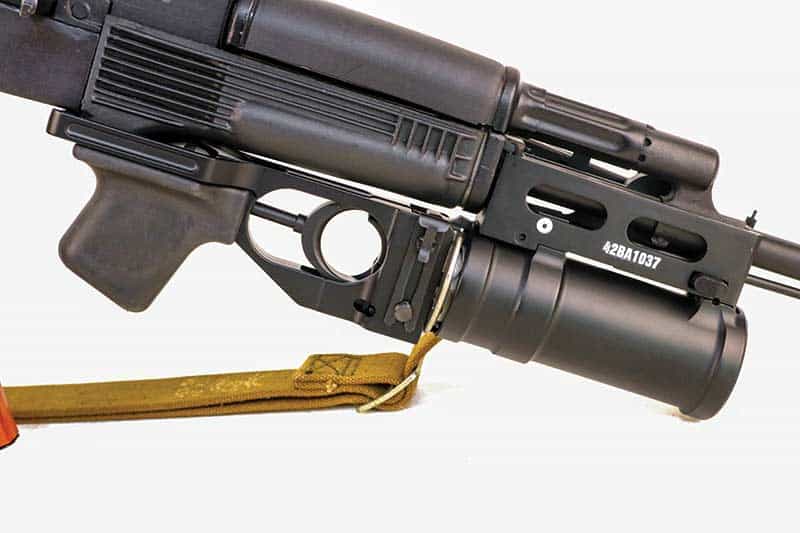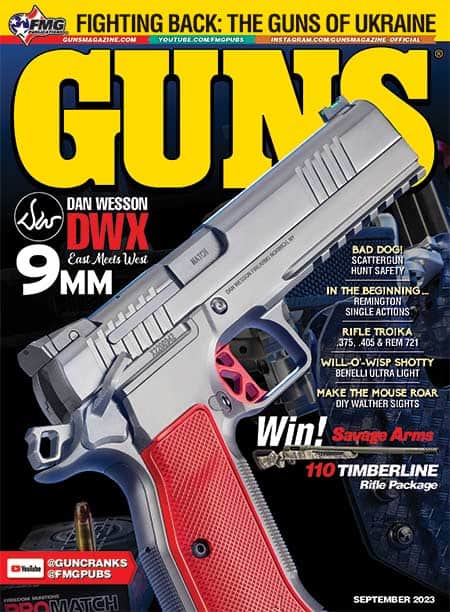The Guns Of Ukraine
Bringing The Heat, Soviet-Style
Serg is a 30-year-old Ukrainian soldier and a friend. He has been fighting Russians and Russian-backed separatists since 2014. Throughout his entire adult life, this young man has known nothing but war.
On 23 February 2022, Serg’s world seemed stable. After years of fighting, his thoughts wandered to family and a future. And then, the following day, Putin’s Army rolled across the Ukrainian frontier with some 120 Battalion Tactical Groups organized into four armored spearheads. Since that moment Serg and his fellow Ukrainian patriots have been fighting for their very survival.
Serg’s mother is Ukrainian. His father is a former Soviet military officer still living in Russia. Putin’s invasion created a wound in that family that will literally never heal. Serg and his father no longer speak.
The world expected the war to be one-sided, bloody and short. In the opening hours President Biden offered his Ukrainian counterpart Volodymyr Zelenskyy a helicopter to spirit himself and his family out of the country to safety. In what will go down as one of the most epic comebacks in the history of politics, Zelenskyy famously responded, “The fight is here; I need ammunition, not a ride.” Now more than a year later, Vladimir Putin is getting schooled in the remarkable capabilities of a desperate patriotic people deftly led.
Western weapons are keeping the Ukrainian defense alive and Putin’s troops are getting tired. The Russians are fighting a tyrannical war of conquest. The Ukrainians are fighting for their homes, their families and their freedom. This indomitable fighting spirit helps offset a shortfall in tanks and planes.
Small arms have flowed into Ukraine from around the world alongside such stuff as tube artillery, HIMARS multiple launch rocket systems, and now, Western armor. While it has made for a most eclectic amalgam of weapons along with no end of headaches for the logisticians, most Ukrainian soldiers battling in places like Bakhmut and Kherson are wielding Cold War-era Combloc weaponry. Here are the major infantry arms in use in Ukraine today.
Comrade Kalashnikov’s Killer
Mikhail Timofeyevich Kalashnikov was supposedly an uneducated peasant who first imagined his eponymous assault rifle while in a hospital in 1941 after having had his T34 tank shot out from under him by the Wehrmacht during the Battle of Bryansk. According to legend, the youthful Soviet tanker had seen how his fellows suffered against the German Blitzkrieg armed with bolt-action Mosin-Nagant rifles and PPSh submachine guns. He therefore scrawled out the design for his gas-operated assault rifle as a tool to help defend the Motherland against the Nazis. The tale reads like a movie script. In fact, it sounds a wee bit too scripted.
Reality is most modern mechanical contrivances are designed by committees of some sort, and the Germans had fielded a crackerjack new assault rifle of their own around the same time Kalashnikov supposedly had his near-religious epiphany. Regardless, the gun bearing his name went on to shape the affairs of men in ways more profound than most anything save the cellular telephone. The outline of the AK rifle even made it onto the national flag of Mozambique.
The Kalashnikov rifle went through several evolutionary iterations. Early versions were all chambered for the 7.62x39mm M43 intermediate round. What the media calls an AK-47 is actually an AKM. What we call the Type 2 AK-47 would have actually been the AK-49 to the Soviets. Tedious semantics notwithstanding, the gun began as a failed stamped-receiver design evolving into a milled-receiver rifle in 1951. This weapon eventually became the stamped-receiver AKM in 1959. This was the definitive model produced by the tens of millions around the globe during the Cold War.
In 1974, Comrade Kalashnikov, then 55 years old, redesigned his ubiquitous assault rifle to accommodate the radical new 5.45x39mm round. This weird little cartridge sported an unnaturally long bullet with a curious air pocket underneath the jacket in the front. This placed the center of gravity well to the rear and created vicious wounds as a result of the round’s tendency to destabilize in flesh. It was the Soviets’ answer to the 5.56x45mm NATO.
The resulting AK-74 differed from the previous AKM in several interesting ways. The AK-74 retained the time-proven stamped receiver along with its rugged long-stroke gas piston-operated action and clunky ranch gate safety selector. While there were a few esoteric tweaks to the design, the most obvious departure was the bulbous muzzle brake mounted on the snout. This inspired contrivance redirected muzzle blast out the sides and back, very effectively counteracting recoil while also reliably clearing the sinuses of anyone unfortunate enough to be standing alongside the rifle when it was fired.
The AK-74 is a personal favorite. The weapon runs like a souped-up .22 yet still hits hard downrange. The long skinny bullet has plenty of reach by assault rifle standards. It is also lightweight and easy to carry in bulk. Magazines have to be rocked in and out, but a zillion unwashed terrorists have figured it out easily enough.
The latest version of the AK-74 is the AK-74M. This weapon features synthetic furniture and feeds from a 30-round polymer magazine. It renders reliable service in the trenches in Ukraine as I type these words.
The Platoon Leader’s Artillery
The GP-25 Kostyor (“Bonfire”) is a muzzle-loading 40mm underbarrel grenade launcher, Russia’s answer to the American M-203. Unlike the M-203, the GP-25 snaps on and off readily using the host rifle’s bayonet lug. Loading the launcher involves inserting a caseless round in from the muzzle until it snaps in place.
The GP-25 has a long double-action trigger allowing for a second shot in the event of a misfire. There is an adjustable sight affixed to the left side of the chassis. The GP-25 can be fired separately from the host rifle if desired.
High-explosive VOG-25 grenades have a lethal radius of six meters. The GP-25 weighs 3.31 lbs., sports a 4.7″ barrel and the sights are adjustable between 100 and 400 meters. The GP-25 has been in service since 1978.
One Sleek SAW
The RPK was first adopted in 1961 as a squad automatic weapon version of the standard Kalashnikov rifle. The original RPK fired the same M43 7.62x39mm round but had a longer, heavier barrel, beefier clubfoot stock and pressed steel bipod. The receiver of the RPK was also formed out of 1.5mm sheet stock, where the AKM was only 1mm. The RPK fed from 30- and 40-round box magazines as well as 75-round drums and offered supporting fire on a scale not available through the standard infantry rifle.
The RPK-74 was introduced simultaneously alongside the AK-74 and reflected the same concept as the previous RPK, only now chambered in 5.45x39mm. The RPK-74 did not use a drum but rather was issued with elongated 45-round box magazines. While the added capacity was a boon, these long magazines made firing from the prone a challenge. From fixed defensive positions, troops were trained to excavate a hole underneath their weapons to accommodate the bulky box.
The most obvious difference between the RPK and RPK-74, aside from the magazine, is the addition of a simple birdcage flash suppressor. This slotted attachment is similar to the original M-16A1 rifle and includes slots all around its circumference. The RPK-74 weighs 10 lbs. empty and is 41.7″ long. The gun cycles at around 600 rounds per minute.
The RPK-74 has been surprisingly popular on both sides of the line in Ukraine. I have seen pictures of a field-expedient carbine version made by cutting the RPK-74’s heavy barrel back to the gas block and losing the bipod. The RPK-74 shares a common manual of arms and magazines with the AK-74 rifle, so training is simplified.
The Kalashnikov Carbine
The AKSU-74 carbine first saw combat service in 1979 during the Soviet invasion of Afghanistan. Essentially a shortened SMG version of the AK-74 rifle, the AKSU-74 features a stubby 8.1″ barrel, a side-folding steel strut stock and a unique redesigned gas block and muzzle booster. The muzzle booster consists of an expansion chamber that helps maintain back pressure for reliable cycling, along with a conical flash suppressor of marginal effectiveness.
Unlike the AK-74, the top cover on the AKSU-74 carbine is hinged at the front and positively retained on the chassis. This makes reassembly much easier over the standard AK-74 rifle. The forearm is also slightly shortened over the parent rifle. The AKSU-74 uses a modified version of the long-stroke, gas piston-driven AK action and cycles at around 650 rounds per minute.
The AKSU-74 suffers from all the same problems as the short-barreled 5.56x45mm AR variant rifles on our side of the pond. However, it is nonetheless a compact and effective personal defense weapon for special forces, aircrews, artillerymen, tankers and the like. Osama bin Laden famously kept an AKSU-74 equipped with a long 45-round RPK-74 magazine handy in the background of his propaganda videos before U.S. Navy SEALs shot him through the forehead.
Ruminations
As I type these words the war still teeters. Putin threatens global thermonuclear war about every 20 minutes, Western nations keep pouring weapons and supplies into the war zone and Ukrainian patriots like Serg skillfully wield them to help defend their homes and their families. Zelenskyy and the Ukrainians have their warts as do we all. However, this is a battle for freedom not philosophically unlike our own epic scrap back during the American Revolution.
Putin’s Special Military Operation was crafted to subjugate the Ukrainian people and create a buffer zone between the despotic darkness of the Russian Federation and the thriving liberty of the European Union. It turned out the Ukrainian people did not much care to be assimilated into the Russian collective. Apparently 45 years of living under the Russian boot was enough.













